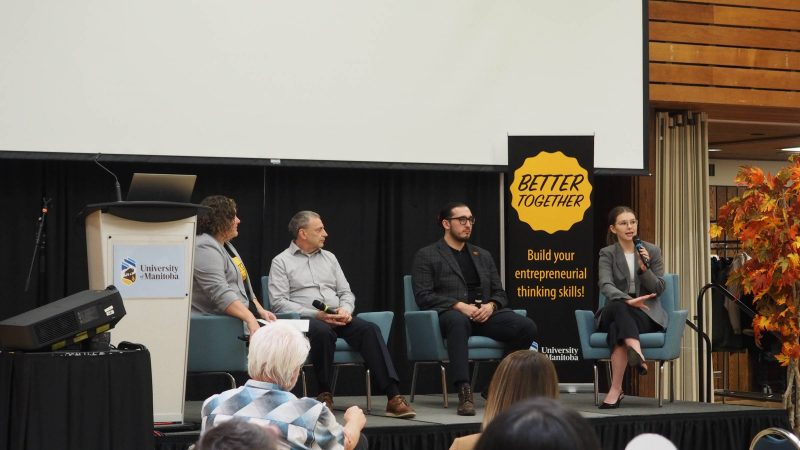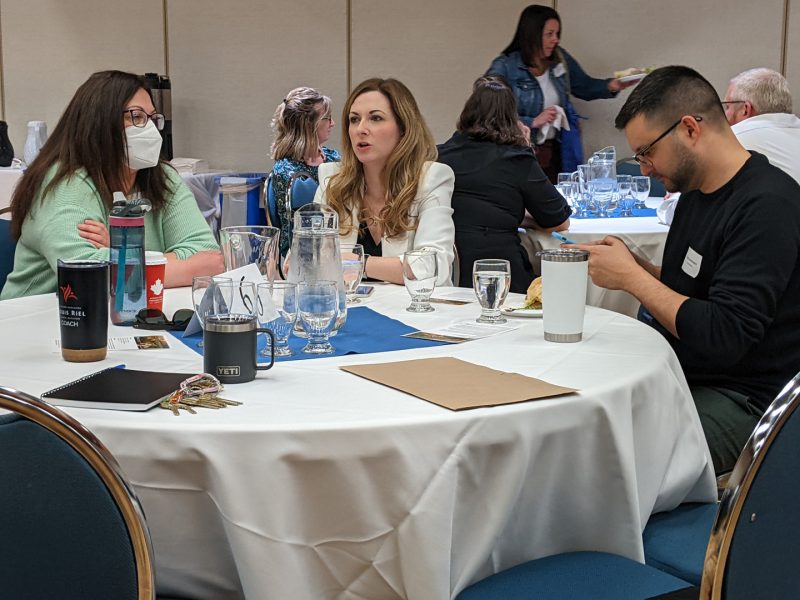
Models
Use these models to create stand-alone assignments, or to scaffold reflection activities in your course from basic to complex. Navigate the tabs below to see descriptions and suggested questions for each model.
What? So What? Now what?
A simple, yet powerful model. Ideal for in-class assignments, short reflection assignments, and for introducing students to reflection in academic contexts. Provides minimal guidance to allow students to explore their reflective process.
|
What? / Describe the experience from your perspective. What happened? What did you notice? What did you learn? What did you feel? |
|
So what? / Explain the impact or relevance of the experience. Why does this experience matter? What are the consequences of the experience? What is the relevance of what you learned? |
|
Now what? / Evaluate your experience, your reactions and the consequences of the experience. What would you do differently next time? What knowledge/skills/competencies do you want to develop as a result? What needs to change? |
Developed by Rolfe et al (2001).
D.E.A.L.
An intermediate model for reflection, D.E.A.L. can help students make their experiential learning process visible and draw explicit connections to course content.
|
D / Describe the experiences in detail. What happened? Where and when did it happen? Who was involved? How did I react? |
|
E / Examine the experience through learning objectives and goals. What course concepts are represented in the experience? What course concepts, theories, etc. can help me make sense of it? What skills/competencies did I use? |
|
A / Articulate your learning. What did I learn and how? How did I build on my existing knowledge? Why does this new knowledge matter? |
|
L / Learning goals. What do I need to learn/develop now? What experiences will allow me to practice my new knowledge/skills/competencies? How can my instructor support my continuous learning? |
Adapted from Ash & Clayton (2009).
Gibbs' Model
A comprehensive model to encourage deeper introspection. This model asks students to evaluate their affective responses and to create action plans. Well suited for larger reflection assignments after students had the opportunity to practice with simple models like What? So What? Now What?
|
Description / Describe the experience. What happened? What did you do? What was the outcome of the experience? What did you want to happen? |
|
Feelings / State the feelings and reactions you had about the experience. What were you feeling before, during, and after the experience? What were you thinking about during the experience? What do you think/feel about it now? |
|
Evaluation / Provide evaluations of the experience, both positive and negative. What did you enjoy about the experience? What was challenging? What was easy? What would you have liked to happen differently? |
|
Analysis / Analyze the experience. Why did you feel that way? Why did some aspects feel easy and others challenging? Why would you like the experience to have been different? |
|
Conclusions / Reconciling the experience through learning. What did I learn from this experience? How can I prepare for future experiences like this one? What skills/competencies/knowledges do I want to develop as a result of this experience? |
|
Action plan / Create an action plan for growth and development How will I develop those skills/competencies/knowledge? How can my instructor support me? How will I continue practicing and challenging myself to grow in this area? |
Developed by Gibbs (1998).
Activities
There are many ways of integrating reflection into courses and programs. Here are 4 versatile types of reflection activities that can be adapted to different experiential learning contexts.
One-Minute Paper
Requires students to write a brief, in-the-moment reflection about an experience. One-minute reflections are most effective immediately after engaging in the experience.
Helpful tips:
- Encourage students to "write-to-think" instead of thinking before writing.
- You can use one-minute reflections to gather feedback from students.
- These activities are generally not graded and don't include writing guidelines or criteria (e.g. no word-count).
- You can use one-minute papers as prompts for future self-reflection.
Reflective Journal
Requires students to practice and record their reflections over a set period of time and with regular frequency (e.g. bi-weekly journal entries over 1 month).
Helpful tips
- Reflective journals are best suited for activities that happen over extended periods of time.
- Students can use any of the reflection models shared above to structure their entries.
- Short, focus entries (around 250 words) are ideal.
- Build-in pre-experience and post-experience entries to help students students for the experience and reconcile their learning journeys.
- Can be combined with group projects to encourage reflection on the process of collaboration.
Reflective Essay
Reflective essays follow the classic essay structure : introduction, body, and conclusion. These stand-alone reflection activities encourage students to engage in deeper reflections, make clear and explicit connections to course content and practice their writing skills.
Helpful tips:
- Use a series of smaller reflection assignments to prepare (i.e. scaffold) students for a reflective essay.
- Require students to prepare an outline of their final essay and create opportunities for feedback.
- Encourage students to use any of the 3 models of reflection shared above to create their outline.
- Focus the assignments reflection question on the experience, rather than course content.
Learning Portfolio (Comprehensive)
A learning portfolio is a collection of artifacts, documents, and reflections that demonstrate a student's learning, growth, and achievements over time. These portfolios are used to provide a holistic view of a student's progress and development.
Important considerations:
-
Artifacts: Learning portfolios contain a variety of artifacts that showcase a student's work and achievements. These artifacts can include essays, research papers, creative projects, presentations, multimedia creations, and more. Each artifact should be carefully selected to represent a specific aspect of the student's learning journey.
-
Reflections: For each artifact, students provide written reflections that explain the significance of the work, what they have learned, and how it relates to their educational goals.
-
Organization: Portfolios are typically organized into sections or categories that align with the learning objectives or competencies of the course or program. This organization helps both the student and the assessor understand how the artifacts and reflections connect to the curriculum.
-
Process Orientation: Learning portfolios are process-oriented, meaning they are not static documents. Students continually update and revise their portfolios to reflect ongoing learning and growth. This allows for a dynamic view of the student's progress.
-
Assessment and Evaluation: Learning portfolios are often used for assessment and evaluation purposes. Educators or assessors can review the portfolio to gauge the depth and breadth of the student's learning, the quality of their work, and their ability to engage in reflective practice.
-
Showcasing Development: Over time, learning portfolios provide evidence of a student's development and growth in areas like critical thinking, problem-solving, communication, and subject-specific knowledge. They allow students to see how far they've come and where they still need to improve.
-
Holistic Assessment: Learning portfolios offer a more holistic view of a student's capabilities compared to traditional exams and assignments. They enable the assessment of skills, knowledge, and personal development in a comprehensive manner.
Assessment rubrics
Use these rubrics as templates and customize them to fit your unique experiential learning context.
Basic reflection rubric
Use this rubric to assess short reflection papers and basic reflection activities such as individual journal entries and group-work reflections.
| Well developed | Mostly developed | Developing | Requires attention | |
| Critical Thinking | Rich in content. Insightful analysis, synthesis and evaluation. Clear connections are made among the experience, course content and previous knowledge. | Substantial information. Evidence of analysis, synthesis and evaluation. General connections are made, but are sometimes too obvious or not clear. | Information is thin and common place. Attempts are made at analysis, synthesis and evaluation. Connections are limited and vague generalities are provided. | Rudimentary and superficial. Little analysis, synthesis or evaluation. Little or no connections with any other material or are off topic. |
| Personal Reflection | Entries are high quality consisting of personal reflections that connect between real-life, learning, and the experience. | Connects ideas and thoughts to personal life. Evidence of personal connection to learning and the experience. | Little evidence of personal connection, many connections need further explanation or justification. | Lack of connection to personal life. |
| Surface Features | No grammatical or stylistic errors. | Few grammatical or stylistic errors. | Obvious grammatical or stylistic errors that interfere with content. | Obvious grammatical or stylistic errors making the content very difficult to read. |
Adapted from RJ Castro Paredes.
Reflective essay rubric
Use this rubric to assess reflective essay assignments.
| Requires attention | Developing | Mostly developed | Well developed | |
| Quality of Writing | Ideas are not organized in a coherent manner; | <------ | ------> | Ideas are clearly organized and explained; language is clear and expressive. Engages the reader through examples, metaphors and other rhetorical devices. |
| Description | The learning experienced is not described. | <------ | ------> | The learning experience is described in detailed from a personal perspective, other people's perspectives and contextualized. |
| Analysis | Analysis does not move beyond description of the learning experience. | <------ | ------> | Provides explanations of the factors that shaped and influenced the student's personal experience of the situation. Discusses reactions and impacts (self and others). |
| Course content | Connections are not made to course content. | <------ | ------> | Course concepts and theories are used correctly to describe and analyze the experience. |
| Conclusions | New learning, areas for improvement, competency/skill development, and next steps are not identified. | <------ | ------> | Identifies and articulates new learning, areas for improvement, competency/skills development and next steps for continued growth. |
Don't forget the basics!
Keep these 5 features in mind anytime you design reflection activities for experiential learning!
| Continuous |
|
| Connected |
|
| Challenging |
|
| Contextualized |
|
| Guided |
|
Adapted from Eyler & Giles (1999).
References
Ash, S. L., & Clayton, P. H. (2009). Generating, deepening, and documenting learning: The power of critical reflection for applied learning. Journal of Applied Learning in Higher Education, 1(1), 25-48.
Eyler, & Giles, D. (1999). Where’s the learning in service-learning? (1st ed.). Jossey-Bass.
Gibbs, G. (1998). Learning by Doing: A Guide to Teaching and Learning Methods. Oxford: Further Education Unit, Oxford Polytechnic.
Paredes, R. C. (n.d.). Reflective Journal rubric criteria outstanding - 5 proficient - 3 below expectations - 1. Scribd. https://www.scribd.com/document/516038145/Reflective-Journal-Rubric
Rolfe, G., Freshwater, D., Jasper, M. (2001). Critical reflection in nursing and the helping professions: a user’s guide. Basingstoke: Palgrave Macmillan.
Useful Links
We are here to support your experiential learning goals!
News & Stories
View more news and stories-

The Centre for the Advancement of Teaching and Learning November Workshops
Centre for the Advancement of Teaching and Learning
-

Experiential Learning Spotlight: Colleen Plumton on “getting that passion out of our students!” through student-driven assignments.
Centre for the Advancement of Teaching and Learning
-

You can do it! Empowering students through experiential learning
Centre for the Advancement of Teaching and Learning
Contact Us
Experiential Learning for Faculty and Staff
Room 215, 65 Dafoe Road (The Centre for the Advancement of Teaching and Learning)
University of Manitoba
Winnipeg, MB R3T 2N2 Canada
